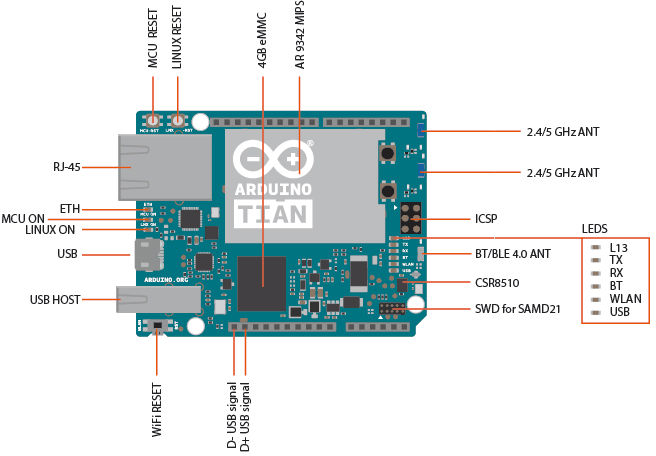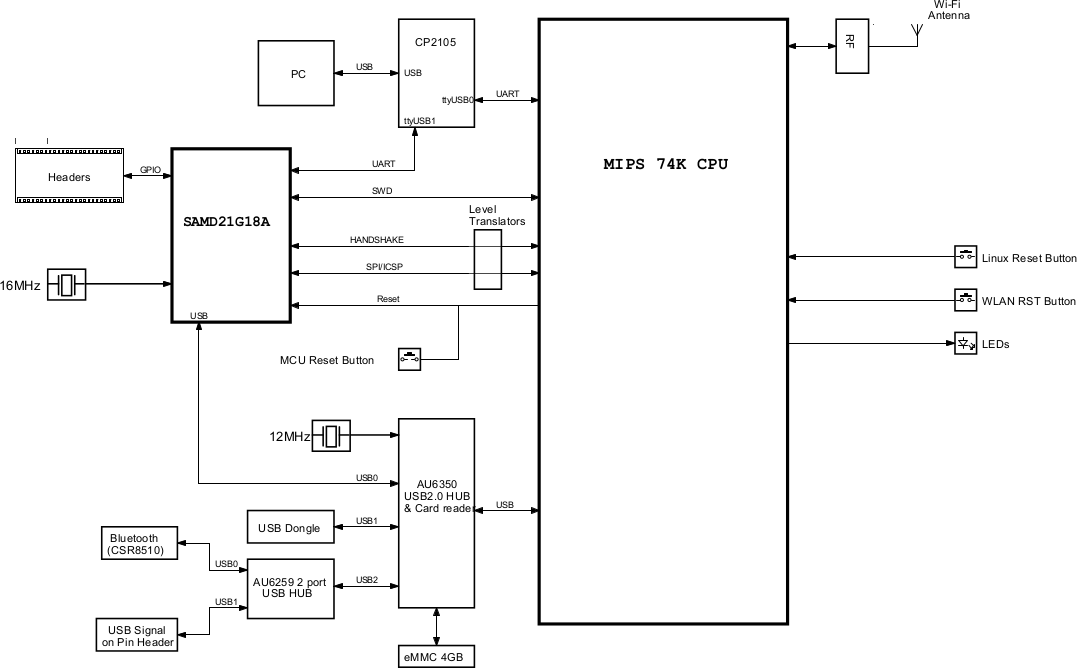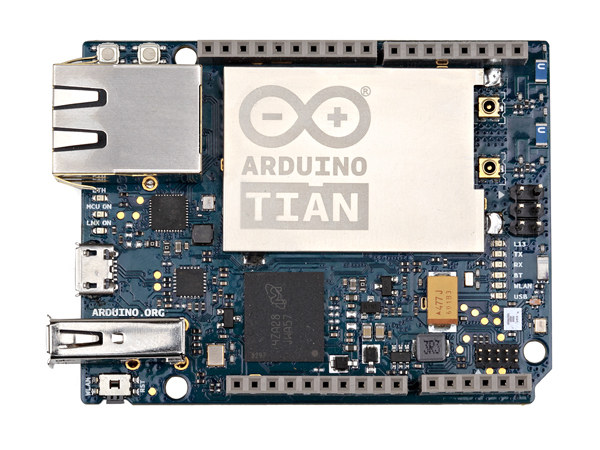Arduino Tian is an update of Arduino Yun board, mainly replacing Atmel ATMega32u4 8-bit MCU and Atheros AR9331 WiSoC with more recent Atmel SAMD21 32-bit Cortex M0 MCU and Atheros AR9342 WiSoC with support for dual band 802.11 b/g/n WiFi, as well as CSR8510 Bluetooth 4.0 SoC.
- MCU part
- MCU – Atmel SAMD21G18 ARM Cortex-M0 MCU @ 48 MHz with 256KB flash and 32KB SRAM
- Digital I/O Pins – 20x GPIOs with 12x PWM and UART
- Analog Input Pins – 6x 12-bit ADC channels
- Analog Output Pins – 1x 10-bit DAC
- DC Current per I/0 – 7mA
- Operating Voltage – 3.3V
- “Linux” SoC part
- SoC – Atheros AR9342 MIPS74Kc processor @ 535 MHz
- System Memory 64MB DDR2
- Storage – 16 MB Flash for firmware, 4 GB eMMC Flash for data
- Connectivity – 10/100M Ethernet, dual band 802.11n 2×2 2.4/5 GHz WiFi, Bluetooth 4.0 + EDR (CSR8510)
- USB – 1x USB host port
- Operating Voltage – 3.3V
- Input Voltage – 5V via micro USB port or 6 to 17V via VIN pin ( for AC/DC adapter or batteries)
- Dimensions – N/A
- Temperature Range – Operating: 0°~60°C; storage: 10°~60°C

You can see that all I/Os are connected to the Atmel MCU, and none of Atheros AR9342 GPIOs can be used. Both chips are connected via a USB hub / card reader, also used for the Bluetooth chip, eMMC memory, and USB port, as well as SPI/ICSP and UART via CP2105 USB to dual UART chip (also used to connect to computer for programming the board). Atmel D21 MCU can also turn on/off the Atheros processor using pin32, which can be necessary if you plan to run on batteries.

The operating system running on Qualcomm Atheros MIPS processor is an OpenWRT based Linux distribution called LininoOS, that is also running on Arduino Yun. You can find software and hardware documentation, including getting started guides using Arduino IDE and Linino, on Arduino Tian Wiki.
Pricing and availability information is not available. This project is managed by Arduino.org (based in Italy), not Arduino.cc (US), and you can find more details on Arduino Tian product page.

Jean-Luc started CNX Software in 2010 as a part-time endeavor, before quitting his job as a software engineering manager, and starting to write daily news, and reviews full time later in 2011.
Support CNX Software! Donate via cryptocurrencies, become a Patron on Patreon, or purchase goods on Amazon or Aliexpress






Instead of just having an ESP32 … funny stuff 🙂
Well I suppose it’s OK if you need Linux and more RAM, that kind of stuff.